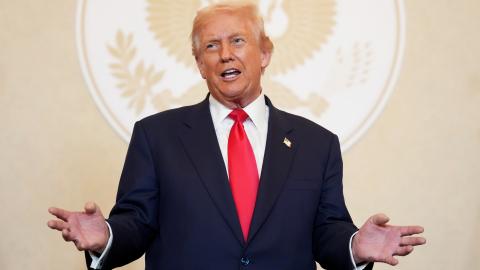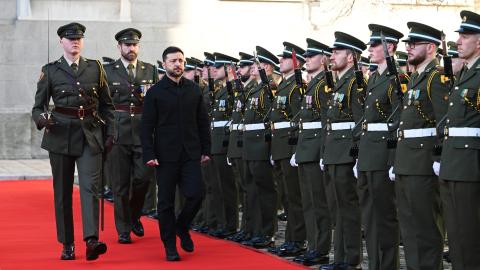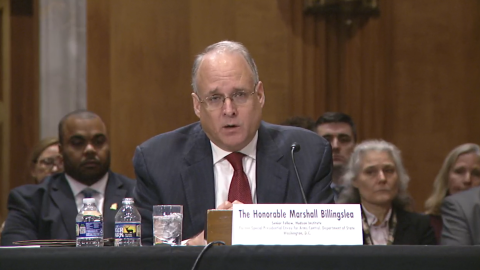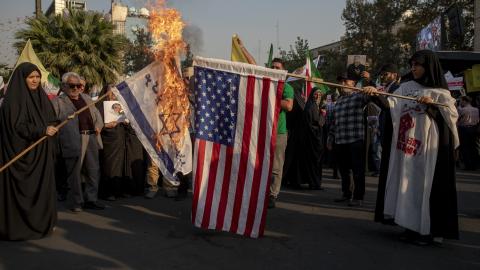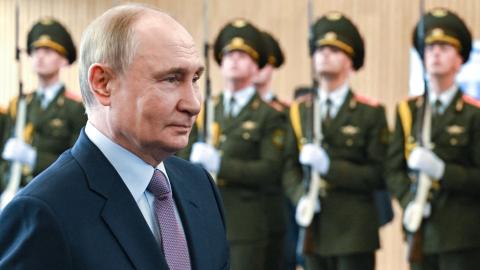Even though Presidents Donald Trump and Vladimir Putin agreed to meet in Alaska to discuss how the Russia-Ukraine War will end, Moscow appears committed to continuing its invasion. Just in the past week, Russian forces have advanced in eastern Ukraine toward Pokrovsk, a fortified town that is key to Ukrainian defenses, as well as along other fronts. Yet on Wednesday President Trump said that Russia would face “very severe consequences” if it did not end the war after the summit.
If Putin does continue his aggression and refuses to implement an immediate and complete ceasefire, the White House should place immediate and crushing sanctions on Russia. In particular, President Trump should take the following nine steps.
1. Place full blocking sanctions on all Russian financial institutions. The United States should target the 20 percent of Russian banks that the Biden administration ignored when the full-scale invasion began in 2022. Moreover, the Treasury Department should work with the European Union to verify that no Russian banks have access to the Society for Worldwide Interbank Financial Telecommunication (SWIFT) system. President Trump will also need to amend Executive Order (EO) 14024 to authorize secondary sanctions on any foreign bank that transacts with Russian financial institutions.
2. Immediately sanction the several Chinese banks that have provided financial services to the Russian aerospace and defense sectors. EO 14024, as amended, already allows the Treasury Department to do this, and it likely has targets in mind. The administration should also warn Kazakhstan and Kyrgyzstan that their banks could be next.
3. Announce complete sectoral sanctions on all Russian energy transactions. The White House needs to amend EO 14024 to authorize secondary sanctions on any entity involved in Russian energy transactions. Washington should also tell EU buyers of Russian oil and gas that they must wind down imports and put their purchases into blocked accounts.
4. Start enforcing the 25 percent secondary tariff on India for its purchases of Russian oil. Furthermore, the Trump administration should place the same sanctions on the People’s Republic of China.
5. Ban refined petroleum products that use Russian crude oil. The European Union has adopted a similar ban, and the United States appears to be importing such products from India.
6. Sanctions all vessels in Russia’s shadow fleet of oil tankers. The European Union and United Kingdom are sanctioning 359 ships that the United States is not. Washington should match these sanctions to prevent the Kremlin from exporting oil and using proceeds from this trade to fund its war.
7. Advise oil tankers flagged, registered, or owned by companies in the EU that they must stop transporting Russian crude oil. In July, tankers owned or insured by companies in Group of Seven Plus (G7+) countries transported 55 percent of the Russian oil exported by sea. In January, that figure was 36 percent. Besides this trade, G7+ tankers handled 75 percent of all Russian oil product exports last month.
8. Seize the more than $5 billion in Russian government assets that are currently frozen in US banks. Washington should allow Ukraine to use this money to purchase weapons from US companies. The EU is already doing something similar by allowing Ukraine to access interest from frozen assets.
9. Urge Congress to pass the Sanctioning Russia Act of 2025. This legislation, introduced by Senators Lindsey Graham and Richard Blumenthal, has 84 cosponsors in the Senate. It would codify existing sanctions and expand the president’s ability to impose new measures.
Taken together, these measures will deter banks, shipping companies, and refineries from dealing with Russian oil. They will also deter countries from importing products using Russian oil, and penalize India and China until their companies stop purchasing Russian energy products. These actions will deprive Putin’s war economy of up to $600 million per day in revenue, while giving Ukraine $5 billion to buy weapons. If the EU follows America’s lead, Ukraine could have access to roughly $300 billion in frozen assets.
As a result of these steps, the ruble will collapse, and without hard currency, the Russian Central Bank will be unable to intervene. Russian banks will become insolvent, and the Russian stock market will crash. Eventually, the economy will seize up. Hyperinflation will set in, and the war will finally become real for Muscovites. When inflation eats away at their life savings, when they cannot access dollars except via the black market, and when prices double every few weeks, Putin and his war will become wildly unpopular. Then Moscow will finally agree to an unconditional ceasefire and a peace deal.
